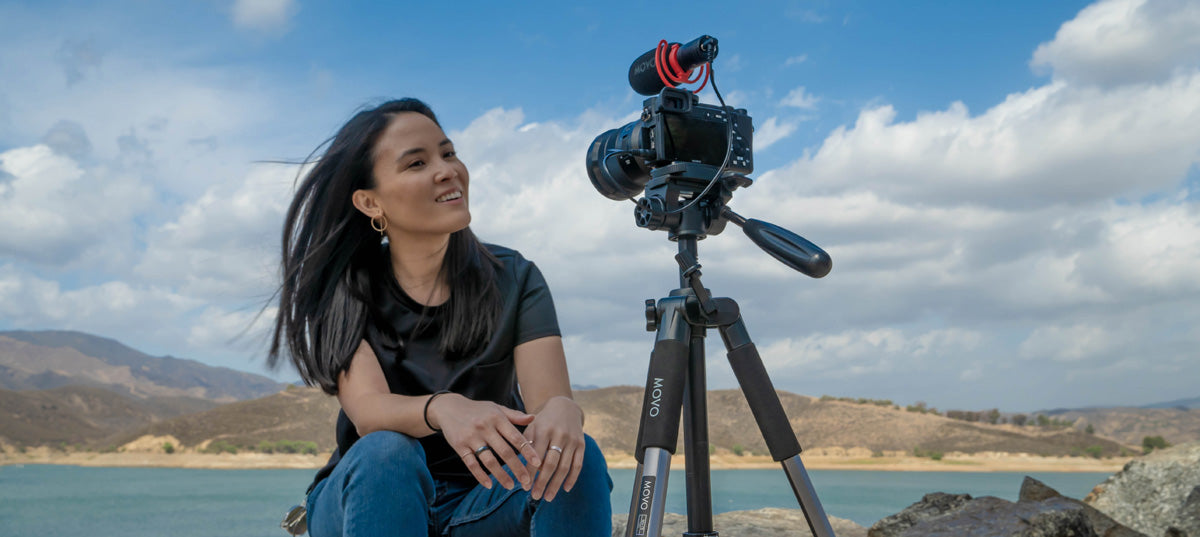Your Cart is Empty
 Free Shipping
Free ShippingEnjoy the convenience of free shipping on all orders. We believe in transparent pricing and delivering value straight to your doorstep. read more...
 30-Day Money-Back Guarantee
30-Day Money-Back GuaranteeShop with confidence knowing you have a full 30 days to try our products. If you're not completely satisfied, return your purchase for a full refund, no questions asked. read more...
 2-Year Warranty
2-Year WarrantyWe stand by the quality of our products with an industry-leading 2-year warranty. Enjoy peace of mind knowing your vlogging and podcasting equipment is covered against defects and issues. read more...
 Lifetime Customer Support
Lifetime Customer SupportOur commitment to you doesn't end at purchase. With lifetime customer support, you can reach out to our expert team anytime for help, advice, or troubleshooting, ensuring you always get the best performance from your gear. read more...

by Tycho Smith September 17, 2019
Some photography accessories are non-negotiable. Without items like a camera, specific lenses and a tripod, you’ll have a difficult time capturing the quality of photographs you’re aiming for. Tripods and gimbals are extremely important for both photographers and filmmakers as their purpose is to keep the camera steady, creating a more professional and concrete image. However, the tripod head is an essential piece of this entire accessory. Learn more about how to use your panoramic tripod head and why it’s so important.
Most people don’t realize that you cannot simply attach your camera to your tripod if you want to move your camera while taking a steady shot. Of course, you have the ability to slide your camera right onto the tripod itself, but this setup will not allow you to move the camera around. When capturing panoramic shots, you’ll probably want to slowly scan the entire landscape to create a more realistic and enticing photograph or scene of the surroundings.
This is where a tripod head can come in handy. This small attachment can be screwed on top of your three-legged tripod and then attached to the camera itself, allowing you to move the shot at a steady pace while also stabilizing the camera and preventing excess movements. A shooting tripod head can stabilize the entire shot as you zoom in, out or move the camera around the scene.
The most obvious reason for using either a panoramic tripod head or a shooting tripod head is to keep the camera steady while shooting still photography. It’s nearly impossible to get a perfectly stable shot in photography or film without a tripod head to help balance the weight of your camera. When researching tripod heads, you’ll likely come across the term “gimbal.” A gimbal stabilizer is used to keep video steady and is often handheld devices rather than stand-alone tripods. However, this is where the terminology can get a bit tricky; a gimbal tripod head is typically used in photography to stabilize a camera with a large lens.
While stabilization is often cited as the main purpose of a tripod, this accessory can also help you capture a number of other photography and video effects. Time lapses use tripod heads to keep the camera in the exact same position for long periods of time to show the movement or progress of the subject without the camera itself disrupting the image through unwanted movements. Long-exposure photography, which is often used to photograph waterfalls or the night sky, also requires the use of a tripod for the very same reason. And, it allows the photographer to sit back and adjust the photo settings to get the perfect final product.
This gimbal tripod head is perfect for shooting video or photos as it attaches easily to most tripod sets and it allows for maximum movement. If you need to walk with the camera, you can detach the gimbal and hold the image steady with the thick metal frame that stabilizes the camera. This shooting tripod head features a quick-release plate that makes it extremely easy to slide the gimbal on or off the tripod stand at any time. Able to support up to 30 pounds of camera equipment, the Movo GH700 has an adjustable arca-swiss clamp to easily switch the attachment and get the optimal shot. For anyone who needs a tripod head that can support more than 30 pounds of gear, try out the Movo GH800 made from carbon fiber materials.
This compact tripod head is designed for those looking to work on their time-lapse skills. With the ability to support a camera weighing up to 4.4 pounds, the Movo MTP-20 is motorized and able to spin around a full 360 degrees, capturing everything you want to see in a complete time-lapse video. You’ll also receive a number of adapters to hook up your GoPro or Smartphone. This is your best option if you’re looking for a budget-friendly tripod head for time-lapses.
Movo offers a line of excellent shooting tripod heads to allow beginners and experts to take their photos and videos to the next level. Keep your images stabilized with the tripod feature and then add a panoramic tripod head to slowly move your camera and capture a truly enchanting landscape image. You can also experiment with different photography and video styles like long-exposure and time-lapse. Let your creativity run free and test out some new top-notch accessories.
We’re a team of creators and entrepreneurs who proudly support the content creation community through innovative, high-quality products that let you do you. From filmmakers to photographers, vloggers to podcasters, and beyond, Movo helps you share your creative voices across countless mediums and content platforms everywhere.
Receive access to exclusive deals, updates, and more.
